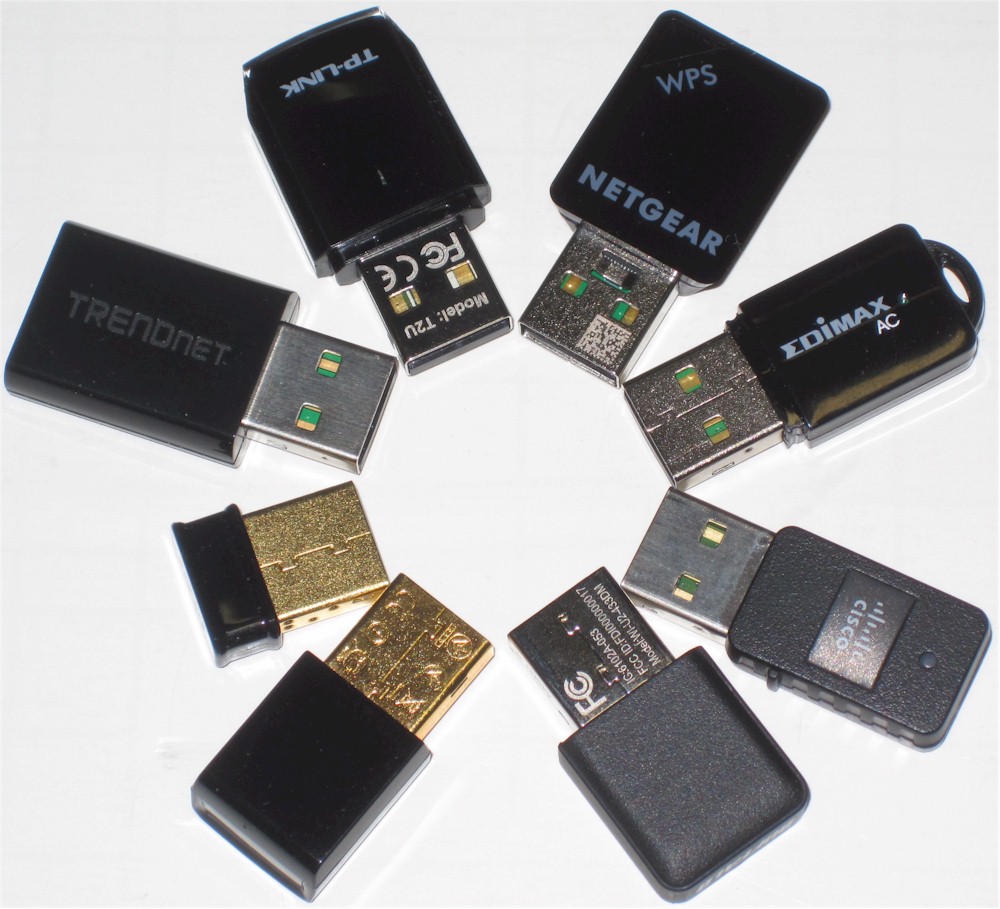
Introduction
A few weeks back, someone in the Forums asked whether teeny, tiny 802.11ac USB adapters were any good. Being a data driven kinda guy, I decided to see.
I gathered up the eight small 1×1 AC USB adapters shown in the opening photo and table below. Our class designation for this flavor adapter is AC580, because they produce maximum link rates of 433 Mbps in 5 GHz (with 80 MHz bandwidth mode) and 150 Mbps in 2.4 GHz (with 20 MHz bandwidth mode).
The product table shows ASUS, TP-LINK, TRENDnet and Edimax opted for the more optimistic AC600 moniker, Buffalo undersold itself with AC433, Linksys went with the most accurate AC583 and NETGEAR skipped the whole thing, not even mentioning "AC" in its official product name. No wonder consumers get confused!
One of the eight adapters, Edimax’ "nano" sized EW-7711ULC is 5 GHz only. Since 802.11ac applies to 5 GHz only, Edimax figures your notebook’s existing 2.4 GHz radio will work just fine. As a payoff for this tradeoff, the 7711ULC is the smallest of the adapters tested, barely larger than the USB connector itself.
| Product [click to visit product website] |
Price [click to check current price] |
Driver (Win 7) |
Chipset | FCC ID | WPS Button |
|---|---|---|---|---|---|
| ASUS USB-AC51 Dual-Band Wireless-AC600 Wi-Fi adapter | $40 | 5.1.8.0 | MediaTek MT7610U | MSQ-USBAC51 | N |
| Buffalo WI-U2-433DM AirStation AC433 Dual Band Wireless Mini USB Adapter | $25 | 1024.1.719.2013 | Realtek RTL8811AU | FDI000000017 | N |
| Edimax EW-7711ULC AC450 Wi-Fi USB Adapter-11ac Upgrade for Laptops | $25 (available soon) | 5.1.5.1 | MediaTek MT7610U | NDD9577111306 | N |
| Edimax EW-7811UTC AC600 Wireless Dual-Band Mini USB Adapter | $17 | 1024.9.1219.2013 | Realtek RTL8811AU | NDD9578111305 | Y |
| Linksys AE6000 Mini USB WiFi Wireless AC583 Dual-Band Adapter 802.11ac | $33 | 5.0.4.0 | MediaTek MT7610U | Q87-AE6000 | N |
| NETGEAR A6100 WiFi USB Mini Adapter | $39 | 1024.2.618.2013 | Realtek RTL8811AU | PY313200228 | Y |
| TP-LINK Archer T2U AC600 Wireless Dual Band USB Adapter | $30 | 5.1.9.0 | MediaTek MT7610U | TE7T2U | Y |
| TRENDnet TEW-804UB AC600 Dual Band Wireless USB Adapter | $18 | 1024.4.910.2013 | Realtek RTL8811AU | XU8TEW804UB | Y |
Table 1: The Products Tested
These adapters were tested with our latest wireless testbed and so use a newer test process than the one used in last year’s AC1200 USB adapter roundup. The new testbed has higher path loss in 5 GHz than the previous testbed due to increased distance between the device under test and chamber antennas allowed by the larger RF-tight test chamber. So it’s not fair to directly compare the results between the two round-ups. You can’t really compare 1×1 adapters with 2×2 anyway, since the latter supports double the maximum link rate (300 Mbps / 867 Mbps vs. 150 Mbps / 433 Mbps).
All these adapters are pretty small, as illustrated in the line-up shot below. For reference, the leftmost TRENDnet TEW-804UB measures 38 x 19 x 8 mm (1.5 x 0.75 x 0.31 in.), while the rightmost Edimax EW-7711ULC 7.1 is only 18.5 x 14.9 x 7.1 mm (0.73 x 0.59 x 0.28 in.). The unmarked adapters to the left of the EW-7711ULC are the Edimax EW-7811UTC and Buffalo WI-U2-433DM. All use USB 2.0, which is plenty fast to handle the highest throughput any of these adapters can provide.

Eight AC580 adapters lined up
Inside
While this roundup includes eight different adapters, only two chipsets are represented. Half the group uses Realtek’s RTL8811AU while the other uses MediaTek’s MT7610U. It’s interesting to note, however, each adapter uses a different revision driver. Go figure.
The ASUS USB-AC51 board marking reveals it’s an Edimax EW-7711AUC in disguise. The chip to the right of the MediaTek MT7610U is a Skyworks SKY85702-11 5 GHz front end, which includes a 5 GHz power amplifier. Note the use of bent-metal antenna vs. printed circuit.
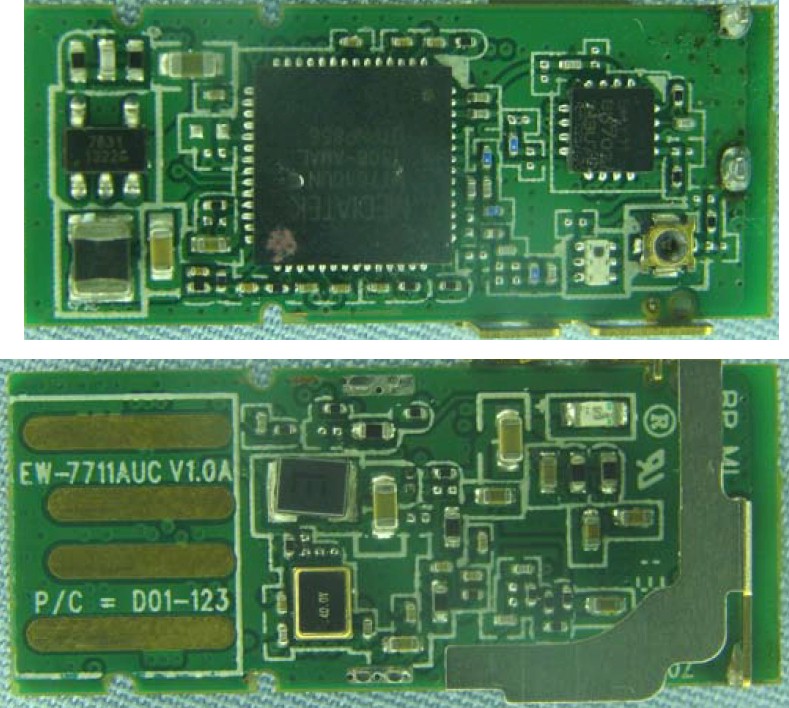
ASUS USB-AC51 board
The Buffalo WI-U2-433DM also uses a formed-metal antenna, but has no external amplifiers to beef up the Realtek RTL8811AU’s signals.
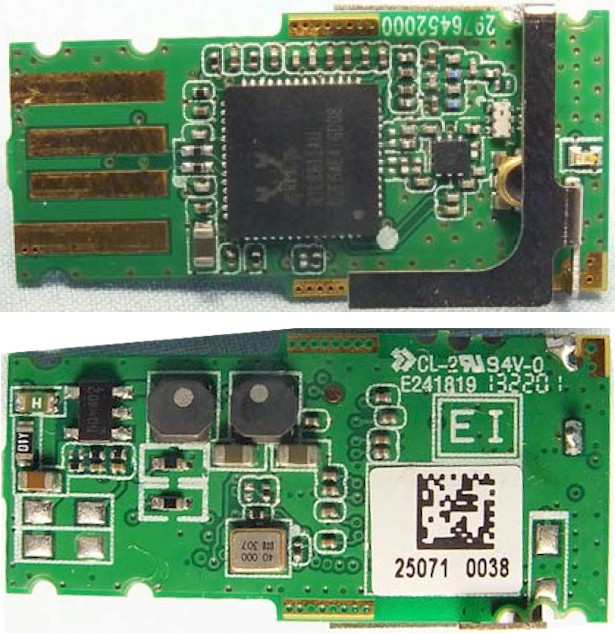
Buffalo WI-U2-433DM board
Inside – more
The Edimax EW-7711ULC is Mediatek-based, has a bent-metal antenna and Skyworks SKY85703-11 5 GHz front end. This Skyworks part has both a 5 GHz transmit power amp and 5 GHz low-noise amp (LNA) for boosting receive signals.
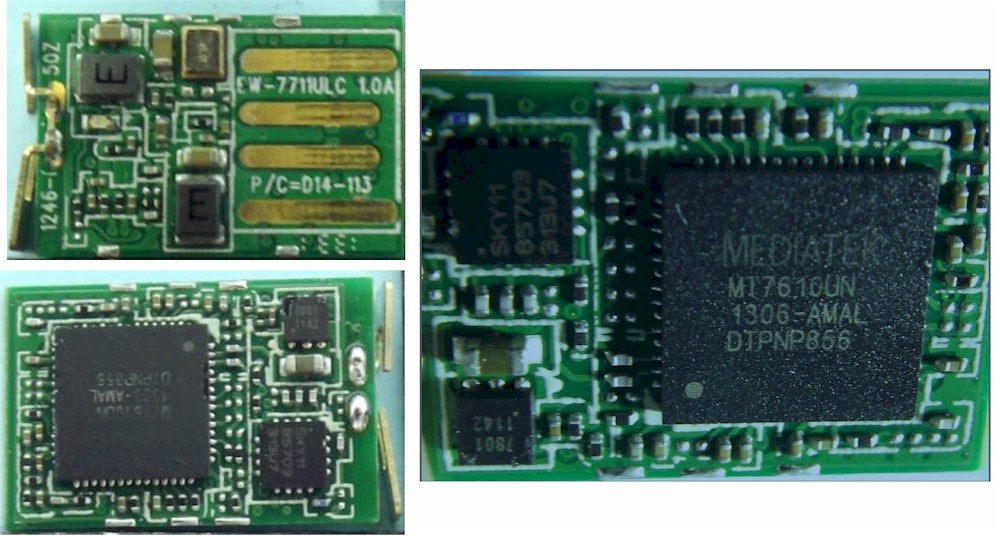
Edimax EW-7711ULC board
Like the Buffalo, the Edimax EW-7811UTC uses a formed-metal antenna and has no external amplifiers.
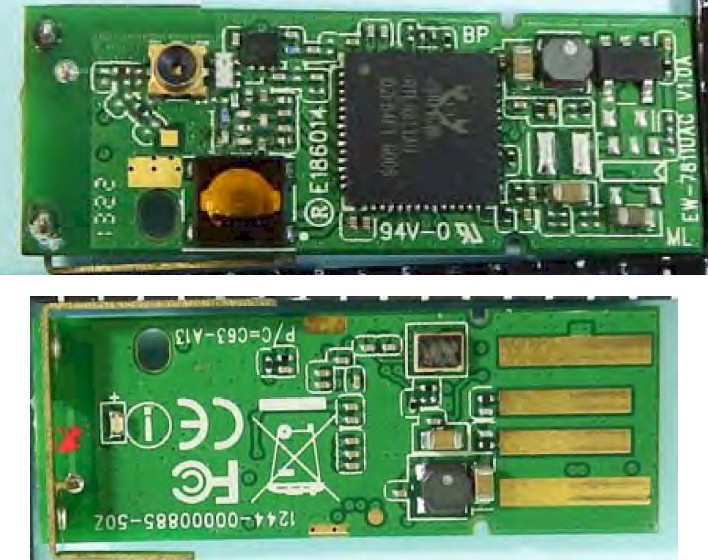
Edimax EW-7811UTC board
The Linksys AE6000 is MediaTek based, uses a bent metal antenna and, according to WikiDevi, uses an RFMD RFFM4501 802.11a/b/g/n/ac WLAN Front End Module that includes both 5 GHz transmit power and LNA.
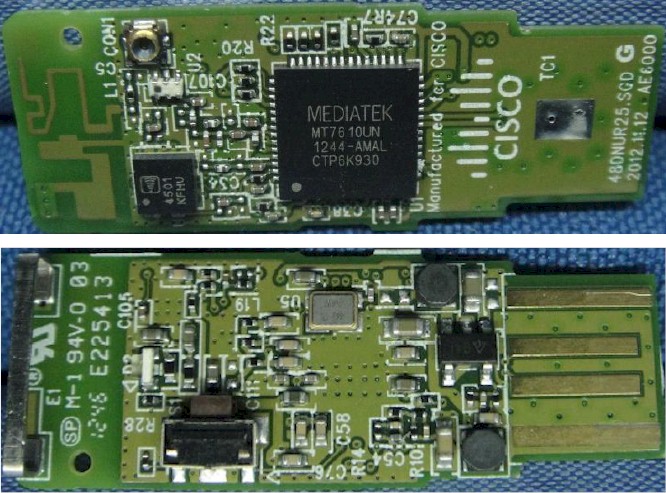
Linksys AE6000 board
Swapping back over to a Realtek-based adapter, NETGEAR’s A6100 looks very similar to Buffalo’s WI-U2-433DM
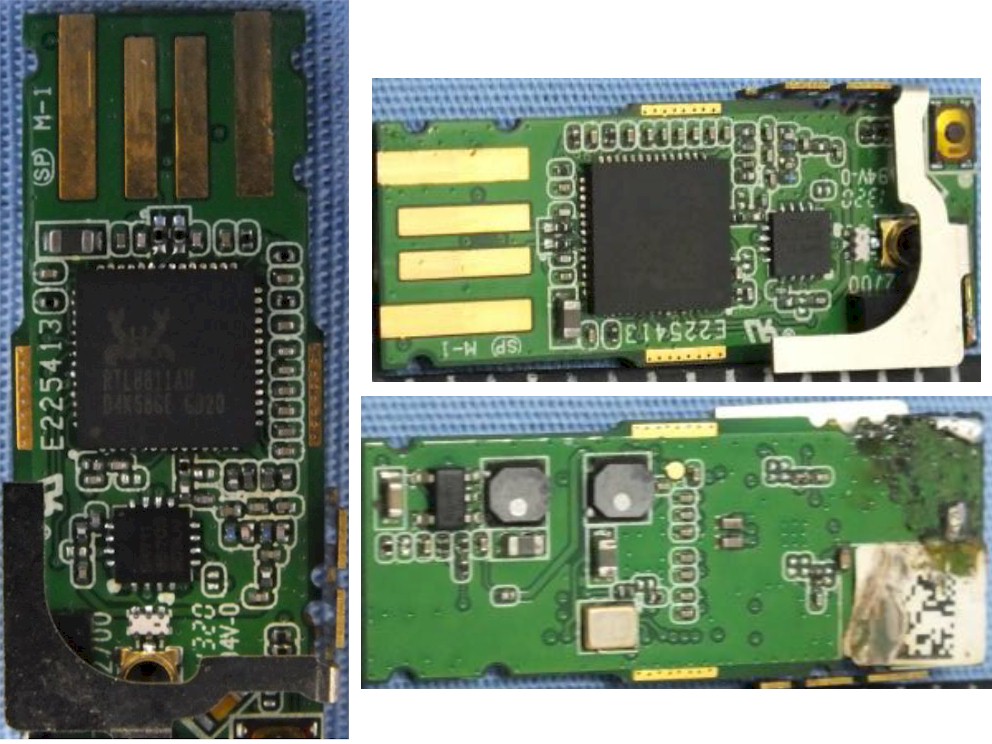
NETGEAR A6100 board
This photo of TP-LINK’s Archer T2U isn’t very helpful since there aren’t any shots of the naked board. So I’m taking WikiDevi’s guess that it is MediaTek MT7610U based. Its antenna looks like it uses both bent metal and printed circuit.
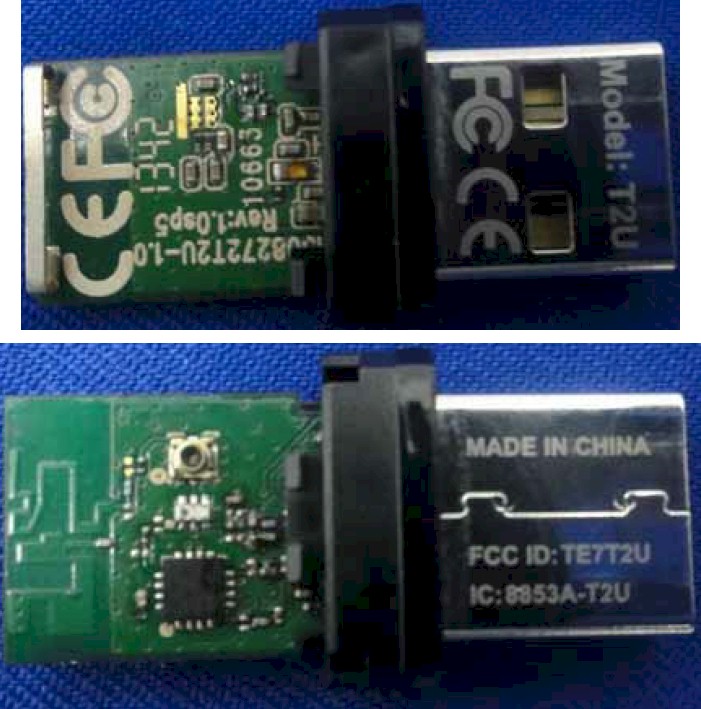
TP-LINK Archer T2U board
The TRENDnet TEW-804UB gets the prize for largest antenna. But like all other Realtek designs, has no external power or low-noise amplifiers.
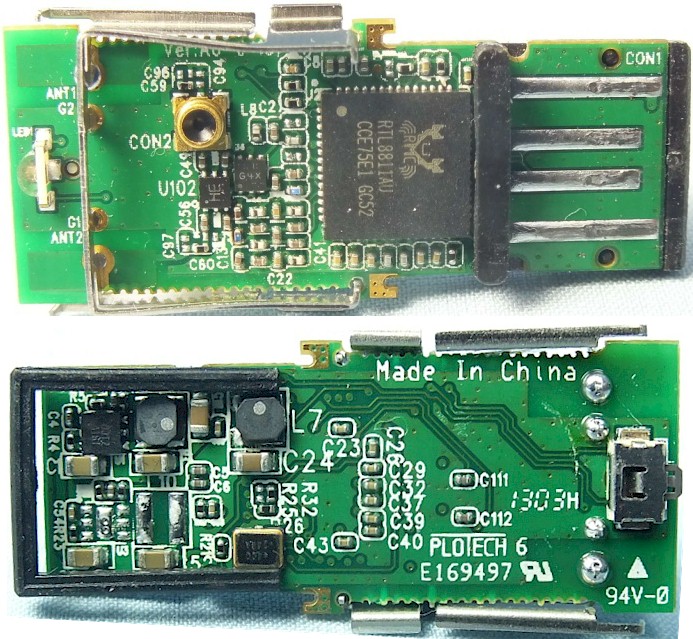
TRENDnet TEW-804UB board
Features
All the adapters came with drivers on CDs. But I was able to download the latest driver for all products except the Buffalo. Perhaps somewhere on Buffalo’s site is the download link for the all-in-one installer that covers all its wireless products. But the only link on the adapter’s product page was for the user guide.
None of the adapters came with extra goodies like external antennas, extender cables or stands. Only four of the products have teensy WPS switches, which could come in handy if you’re a fan of easy Wi-Fi setup.
At least none of the products force you to install a client utility. All but the Edimax EW-7711ULC have directly accessible driver folders once you unzip the driver downloads. But thankfully, the 7711’s .exe file installs just the driver.
Performance – 2.4 GHz
As noted earlier, we used a new test process for this roundup, which produces lower 5 GHz results than the previous process. Path loss for 2.4 GHz is about the same, however. But you’ll see as we run through the throughput vs. range plots that all the devices in this round-up disconnected at smaller attenuation values than we saw in the USB 1200 roundup. So you’ll definitely be trading off range with these physically smaller adapters.
The throughput vs. attenuation plots will make this clear. Although we can compare up to six products, the plots get kind of busy. So I’m just going to compare the ASUS USB-AC51, Buffalo WI-U2-433DM, TRENDnet TEW-804UB, Edimax EW-7811UTC and Linksys AE6000.
The 2.4 GHz downlink plot shows TRENDnet and Edimax adapters have better range than the top-ranked ASUS, i.e. their plots hit the x axis farther out. There’s not a huge difference in maximum throughput (57 – 61 Mbps).
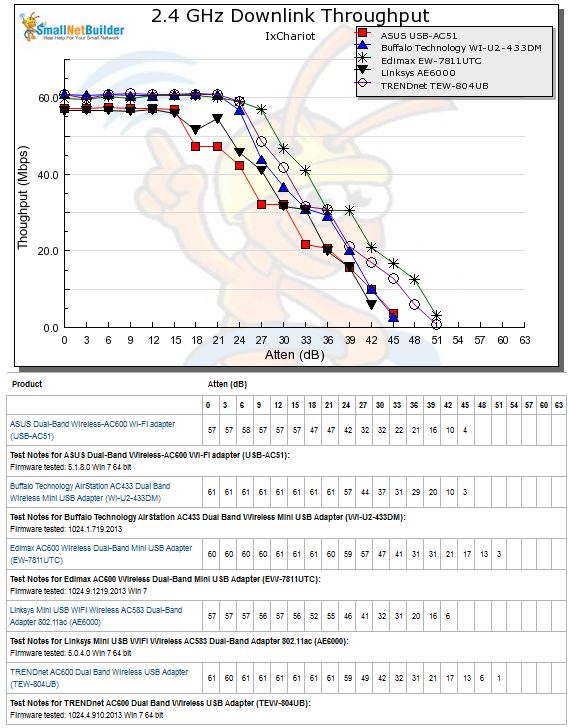
2.4 GHz downlink – Throughput vs. Attenuation
For 2.4 GHz uplink, the Edimax and TRENDnet plots again indicate slightly superior range than the rest of the group. Maximum throughput is lower than downlink, but pretty much the same for all adapters (52 – 54 Mbps). None of the products reach the 60 dB attenuation point that we use to rank 2.4 GHz range. Keep this in mind when looking at the Ranker.
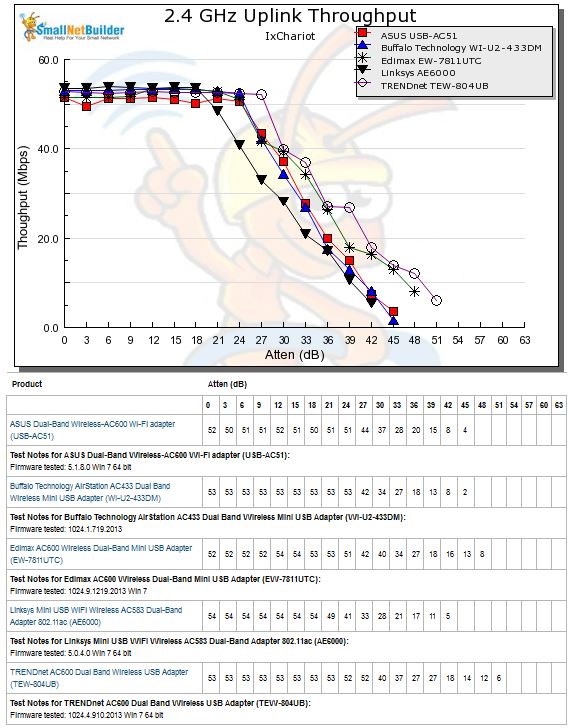
2.4 GHz uplink – Throughput vs. Attenuation
Performance – more
The 5 GHz downlink plot shows very similar performance at lower attenuation (higher signal levels) for all products except the Linksys AE6000. The Buffalo’s odd upward bounce at 18 dB isn’t a fluke; the results shown are the average of two test runs. The Edimax EW-7811UTC and TRENDnet TEW-804UB are again the winners in this comparison since they disconnect last.
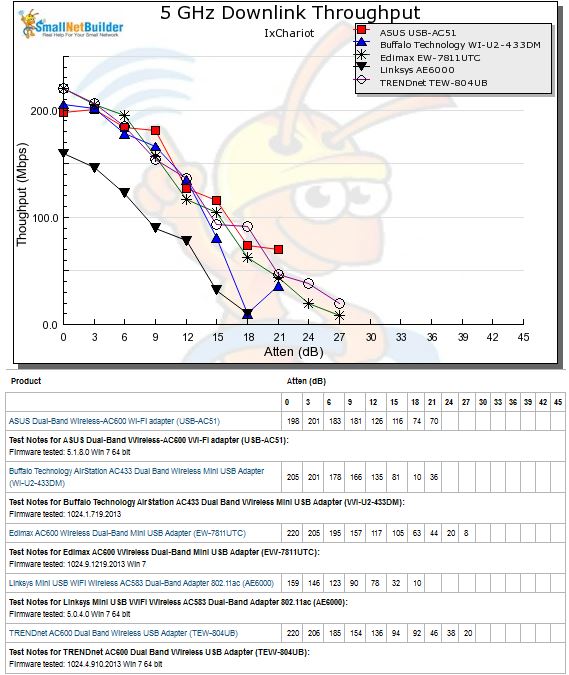
5 GHz downlink – Throughput vs. Attenuation
The 5 GHz uplink plot puts the products to their hardest test since it reflects product transmit performance. The ASUS starts out with the highest throughput and has a slope similar to the TRENDnet. But it disconnects before the TRENDnet, which appears to be the overall winner of this benchmark. The Edimax again disconnects at the same point as the TRENDnet, but at 9 dB its throughput drops to a lower level than all the other adapters.
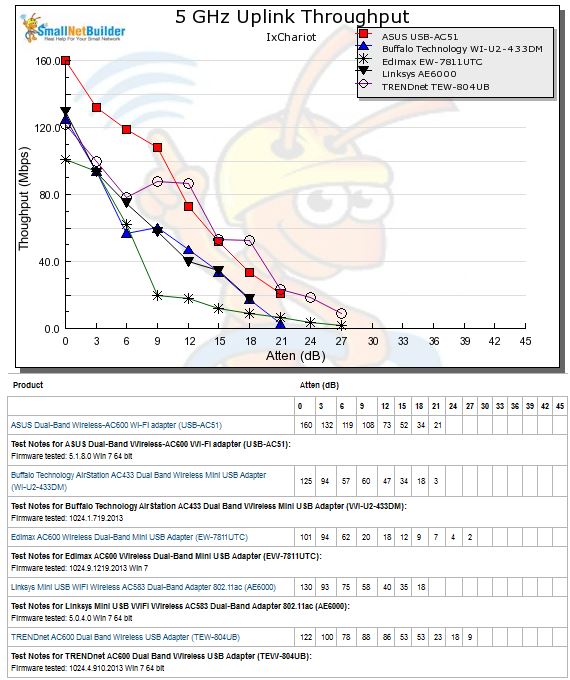
5 GHz uplink – Throughput vs. Attenuation
Since the 5 GHz-only Edimax EW-7711ULC has been absent from these comparisons, let’s give it a special look. Comparing with the dual-band and physically larger EW-7811UTC, both start out at about the same throughput and follow a similar plot curve. But the 7711 disconnects at only 18 dB of attenuation, while the 7811 makes it out to 27 dB.
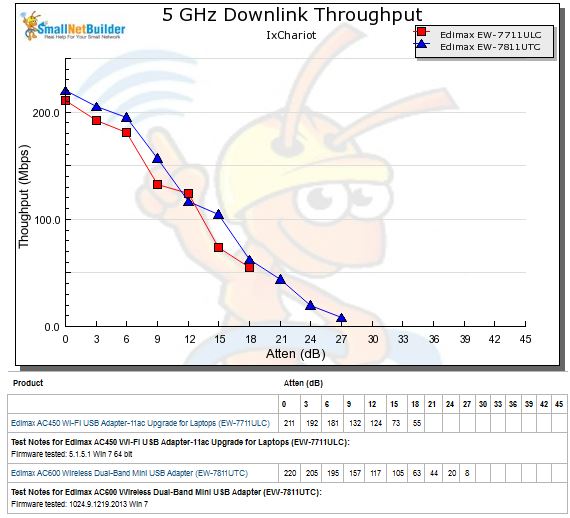
5 GHz downlink – Throughput vs. Attenuation – Edimax adapters
For uplink, the 7711 has surprisingly higher maximum throughput. But the 7811 again hangs in at lower signal levels for the win.
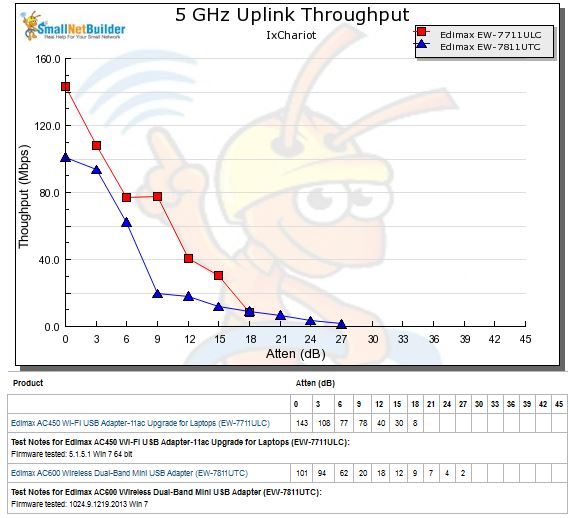
5 GHz downlink – Throughput vs. Attenuation – Edimax adapters
Closing Thoughts
If you want to see whether your spiffy AC router can give new life to old laptops you have lying around, an AC580 USB adapter is a cheap way to do it. For under $20 either the TRENDnet TEW-804UB or Edimax EW-7811UTC will do the job, but work best with strong signal levels. Sure, you could spend $40 or so for the ASUS USB-AC51 or NETGEAR A6100. But for over twice the money, you’re not going to see 2X better performance.![]()
Keep in mind before trying any of these, however, that AC routers can goose performance for N adapters you already have. If your notebook already has a dual-band 2×2 (N600) adapter, it’s unlikely you’re going to get better performance by switching to 1×1 AC.
